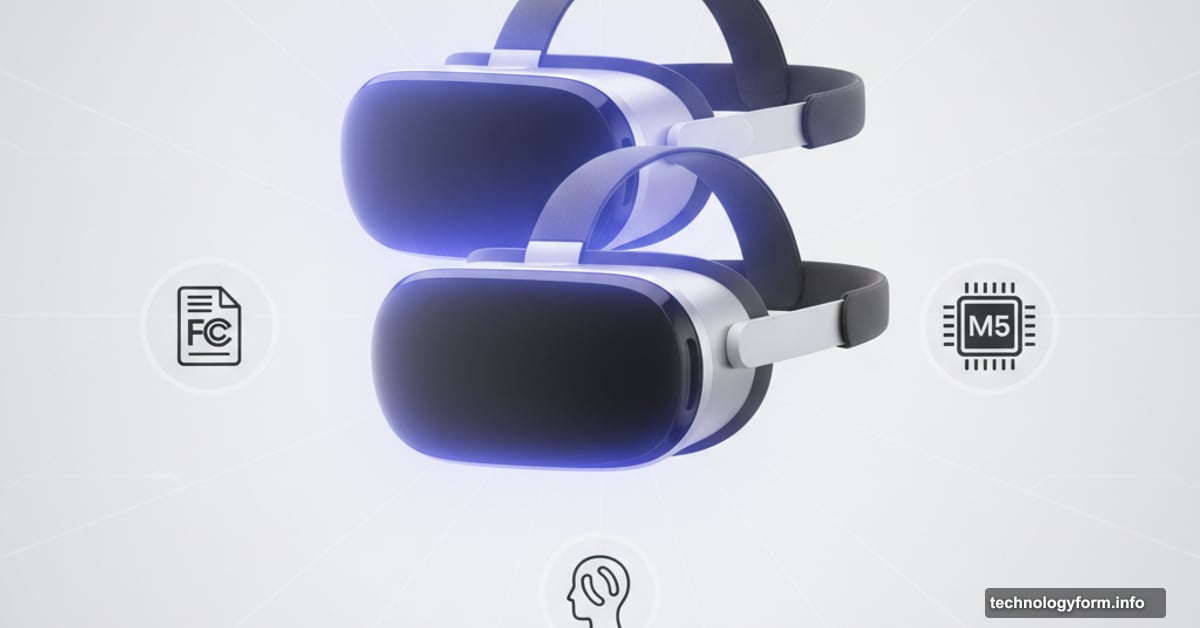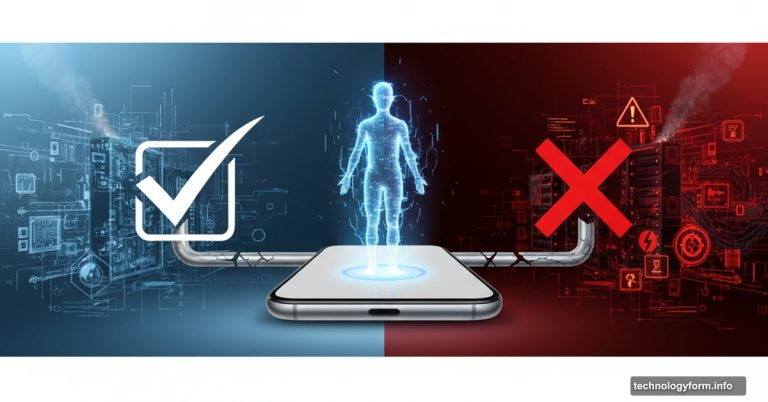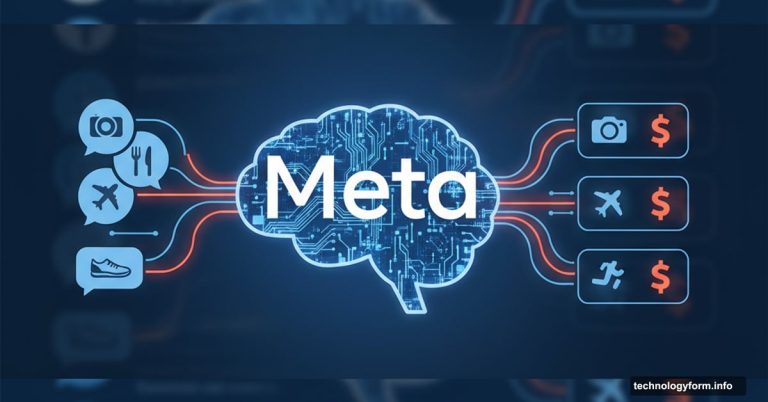Apple’s Next Vision Pro Just Leaked. Here’s What Changes
Apple just tipped its hand. A new FCC filing reveals the company’s working on an updated Vision Pro headset right now.
The filing surfaced this week after months of speculation about Apple’s mixed reality plans. It confirms what industry watchers suspected. Plus, it hints at hardware upgrades that could address the original Vision Pro’s biggest complaints.
The FCC Filing Reveals Key Details
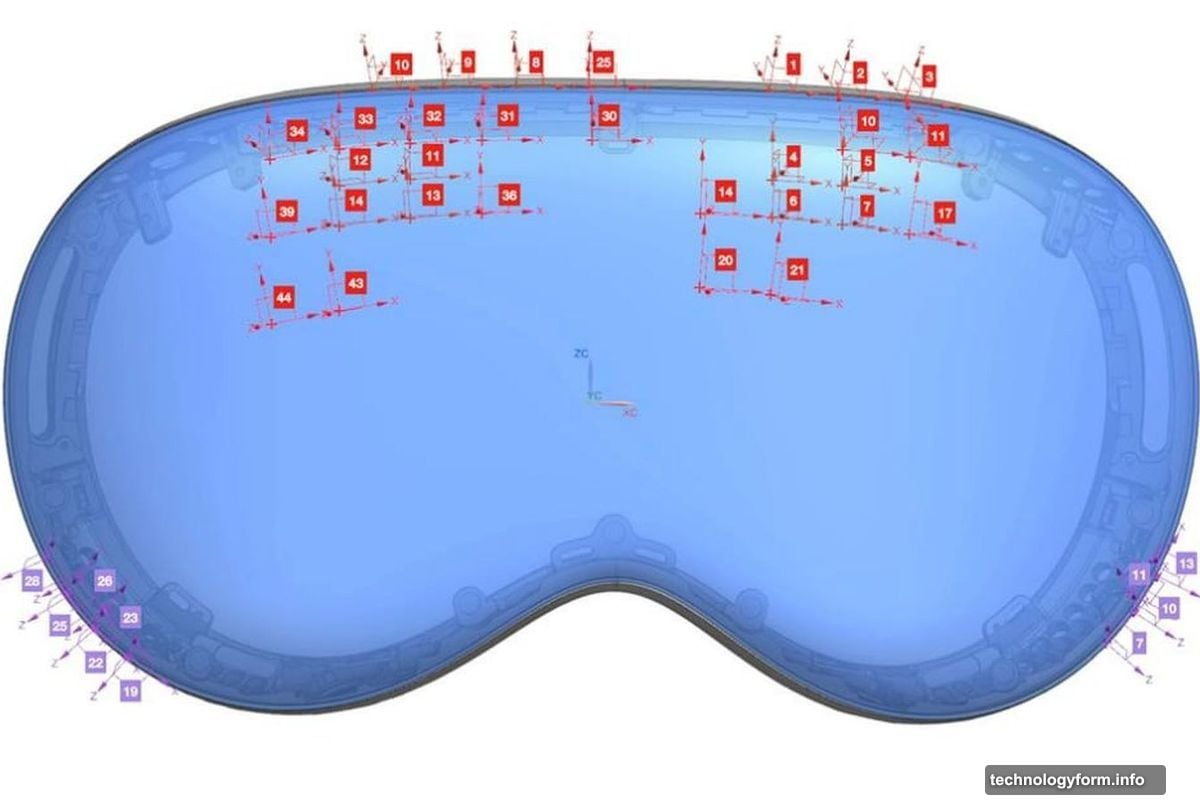
Apple submitted paperwork for a “Head Mounted Device” under model number A3416. The diagram looks nearly identical to the current Vision Pro design.
But here’s what matters. The new headset supports Wi-Fi 6, matching the original model. That seems unremarkable until you consider the timing.
Most companies would upgrade to Wi-Fi 6E or Wi-Fi 7 for a new flagship device in 2025. So Apple’s sticking with Wi-Fi 6 suggests either cost concerns or supply chain limitations. Either way, it’s a curious choice for a premium headset.
The filing doesn’t reveal much else. However, previous leaks paint a clearer picture of what’s coming.
Redesigned Strap Tackles Comfort Issues
The original Vision Pro weighs about 600 grams. That might not sound heavy, but wearing it for extended periods causes neck strain and headaches.
Apple apparently heard the complaints. Bloomberg’s Mark Gurman reported that the next Vision Pro features a completely redesigned head strap.
The current strap distributes weight poorly. It places too much pressure on the front of your face. So the new design likely shifts weight distribution toward the back of your head.
Think about how Meta’s Quest Pro handles this problem. Its rear battery pack counterbalances the front-mounted display. Apple could adopt a similar approach without necessarily adding a separate battery.
Moreover, better weight distribution means longer comfortable sessions. That’s critical for productivity applications. Nobody wants to remove their headset every 30 minutes because their neck hurts.
M5 Chip Brings Serious Performance Gains
Here’s where things get interesting. Code accidentally leaked by Apple suggests the new Vision Pro runs on an M5 processor.
The current model uses an M2 chip. Jumping to M5 represents a massive performance leap. For context, the M5 offers roughly 40% better CPU performance and 50% improved graphics compared to M2.
Why does this matter? Vision Pro already handles most tasks smoothly. But the M5 enables new capabilities that weren’t possible before.
Take real-time 3D rendering. The M5 could render more complex environments at higher resolutions without thermal throttling. That transforms gaming and professional 3D modeling applications.
Plus, improved efficiency means longer battery life. The current Vision Pro lasts about two hours on its external battery pack. An M5-powered model might push that to three hours or more.
Apple’s Broader Mixed Reality Strategy
This updated Vision Pro isn’t Apple’s only move in spatial computing. The company’s building an entire product lineup.
Supply chain analyst Ming-Chi Kuo claims Apple’s developing a lighter Vision “Air” model launching in 2027. It’ll sacrifice some features for lower weight and cost.
Meanwhile, Apple’s also working on Ray-Ban Meta-style smart glasses. These wouldn’t have displays. Instead, they’d focus on voice control, gesture recognition, and basic AR overlays.
That three-tier approach makes sense. The high-end Vision Pro targets professionals and early adopters. The Vision Air appeals to mainstream consumers who want spatial computing without the weight or price tag. And smart glasses serve the casual user who just wants subtle augmented reality features.
The Elephant in the Room: Price and Adoption
Apple’s original Vision Pro costs $3,499. That’s prohibitively expensive for most consumers.
Reports suggest the new model maintains similar pricing. So Apple’s not chasing mainstream adoption yet. Instead, they’re refining the high-end product before scaling down.
This strategy mirrors the original iPhone playbook. Launch expensive. Gather feedback. Iterate quickly. Then introduce cheaper models once you’ve nailed the core experience.
But here’s the catch. Mixed reality adoption remains sluggish even at lower price points. Meta’s Quest 3, priced at $499, hasn’t achieved mainstream breakthrough despite solid reviews.
So Apple faces a chicken-and-egg problem. Without compelling apps, people won’t buy headsets. But developers won’t invest in apps without a large user base.
When This Actually Matters
Gurman reported the new Vision Pro could launch “as early as this year.” That probably means late 2025 or early 2026.
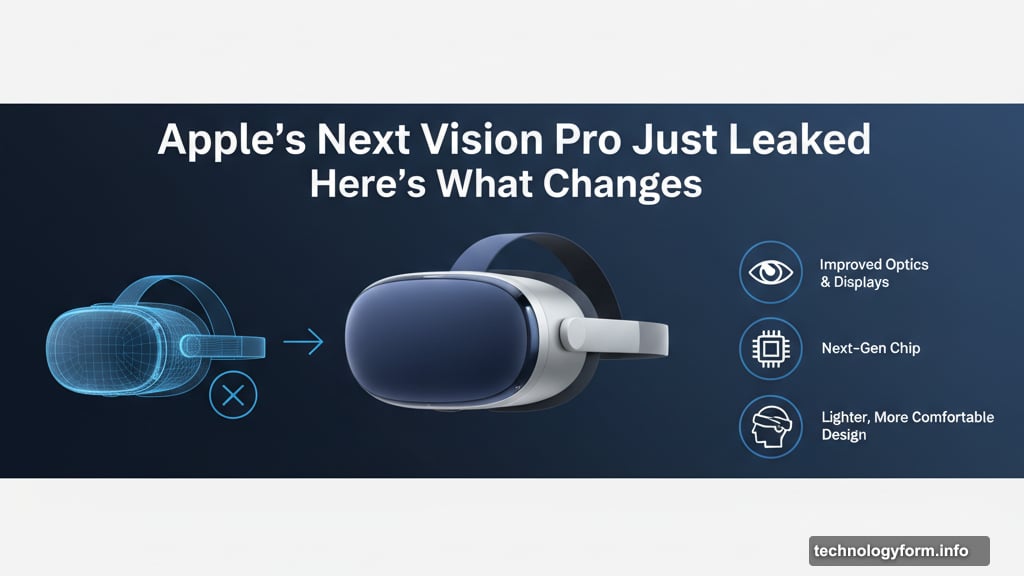
The timing matters because competition intensifies. Meta’s working on higher-end Quest hardware. Samsung partnered with Google on a competing platform. And Chinese manufacturers continue pushing aggressive pricing.
Apple can’t afford to let the Vision Pro languish with 2023 specs. They need consistent updates to maintain their premium positioning.
Moreover, developers need confidence that Apple’s committed long-term. Nobody wants to invest months building Vision Pro apps if the platform might get abandoned.
The Bigger Question Nobody’s Answering
Here’s what bugs me about this filing. It confirms Apple’s working on iteration. But it doesn’t reveal whether they’ve solved the fundamental problems with spatial computing.
Comfort improvements and faster chips are nice. But they don’t address the core issue. Most people still don’t know why they need a mixed reality headset.
The killer app hasn’t emerged yet. Gaming? Maybe, but dedicated consoles work fine. Productivity? Possible, but monitors are cheaper and don’t require charging. Entertainment? Sure, but TVs exist.
Until someone cracks that code, even the best hardware won’t drive adoption. And that’s the real challenge Apple faces. Not building better headsets, but convincing people why they need one at all.
